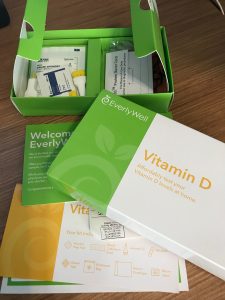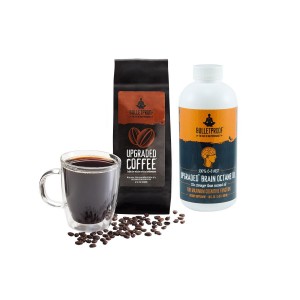3M found that many of its products, including Scotchgard and Scotchban, leached toxic chemicals called PFAS. Sharon Lerner reports on why the company kept making them.
— Read on www.newyorker.com/magazine/2024/05/27/3m-forever-chemicals-pfas-pfos-toxic
Medical researchers make concerning discovery after examining patients with clogged arteries: ‘Raises a series of urgent questions’
Researchers discovered microplastics in the human body — in this case, in the fatty deposits clogging patients arteries.
— Read on www.thecooldown.com/green-tech/microplastics-human-body-effects-study/
Project Drawdown
A friend recently made me aware of a website for a group called Project Drawdown. It’s interesting…it’s addressing the concerns of those who want to do something to fight global warming but maybe aren’t sure where to start. On a larger scale though, it’s identifying all the things we can be doing to reach that drawdown point…where greenhouse gas emissions start decreasing for a change.
In their own words, “Project Drawdown is the first effort to measure and project the collective impact of a broad range of solutions if implemented at scale. Rather than focusing on a single solution or sector of solutions, Project Drawdown has done the math on what humanity is capable of achieving with the broad range of tools already in use around the globe.”
Politicians would be wise to draw from this knowledge base to draft their own proposals for fighting climate change, if they wish to attract the interest of voters who care about this issue. The breadth of ideas here is inspiring.
EverlyWell – hack your heath
 I’m not happy if I don’t feel like my body is operating at peak efficiency…yet sometimes it’s hard to figure out why things seem off. If you have the time and patience, scheduling a trip to the doctor is always the best option. For a quick peek into the systems of your body, there are at-home tests you can do to test an amazing number of things. The company I’ve been trying out is EverlyWell, and they offer a really large variety of tests, depending on what conditions you’re trying to debug:
I’m not happy if I don’t feel like my body is operating at peak efficiency…yet sometimes it’s hard to figure out why things seem off. If you have the time and patience, scheduling a trip to the doctor is always the best option. For a quick peek into the systems of your body, there are at-home tests you can do to test an amazing number of things. The company I’ve been trying out is EverlyWell, and they offer a really large variety of tests, depending on what conditions you’re trying to debug:
- Food sensitivity test
- Food sensitivity+
- Postmenopause test
- Women’s fertility test
- Perimenopause test
- Metabolism test
- Metabolism+
- Thyroid test
- Testosterone test
- Breast Milk DHA test
- DHA+
- Men’s health test
- Women’s health test
- Vitamin D and Inflammation test
- Vitamin D test
- Cholesterol and lipids test
- Heavy metals test
- Sleep and stress test
- HbA1c test
- STD test
- Ovarian reserve test
You get the idea! These tests aren’t covered by most insurance companies, but depending on what you want to test and why, that may be the case anyway (or if you’re on a high deductible plan, it’s all out of pocket anyway, and you can at least use an HSA or FSA to pay for these). It’s cheap, quick, and easy…well sort of easy…some tests DO require some drops of blood so you need to be able to handle that! Just remember…whatever your results, don’t play internet doctor and go crazy over this…but DO use the results to determine if you need to schedule an appointment with a doctor to investigate further!
Get 10% off if you use this link.
Bulletproof coffee
 I’m such a coffee geek, I’m surprised I don’t write about coffee here more! I’ve maintained a separate blog called Coffeeopolis where I used to direct that attention…but in the interest of simplifying life I’ll be favoring this one instead. Today’s coffee fascination is with a new coffee drink called Bulletproof coffee. When I first read about this, I wasn’t sure what to make of it, and I quickly moved on to other, more pressing matters (like, you know, work!). It seems to be popping up more and more though.
I’m such a coffee geek, I’m surprised I don’t write about coffee here more! I’ve maintained a separate blog called Coffeeopolis where I used to direct that attention…but in the interest of simplifying life I’ll be favoring this one instead. Today’s coffee fascination is with a new coffee drink called Bulletproof coffee. When I first read about this, I wasn’t sure what to make of it, and I quickly moved on to other, more pressing matters (like, you know, work!). It seems to be popping up more and more though.
So, what is Bulletproof coffee? It’s designed by Bulletproof Exec, one piece of the puzzle to upgrading ‘your performance in every aspect of life.’ Noble ambitions. Why mess with coffee though? This coffee drink is part of a larger diet that gets pretty complicated…so click that link if you want to know more, but for now, just know that it’s designed to be more of a breakfast replacement. So, how do you make it? You start with one cup of coffee, brewed with 2 1/2 heaping teaspoons of low-toxin coffee (I hear that any wet-process coffee meets this criteria, though you can of course buy special Bulletproof Coffee Beans…). Add 1-2 tablespoons of a medium-chain triglyceride oil, 1-2 tablespoons of unsalted grass-fed butter, and mix it all in a blender for 20 seconds (you can buy a starter kit of ingredients for $50). Click here for a printable instruction card.
So what’s it like? I wish I could tell you. Or not. I haven’t decided if this is something I want to try…I love coffee…and this sounds…weird. What’s gotten me thinking more about it, though, is this article at Fast Company. The author drank Bulletproof Coffee every morning for two weeks, trying it as a true breakfast substitute. The results were interesting and the article is worth checking out. Or check out the video below for instructions for how to make Bulletproof Coffee yourself.


